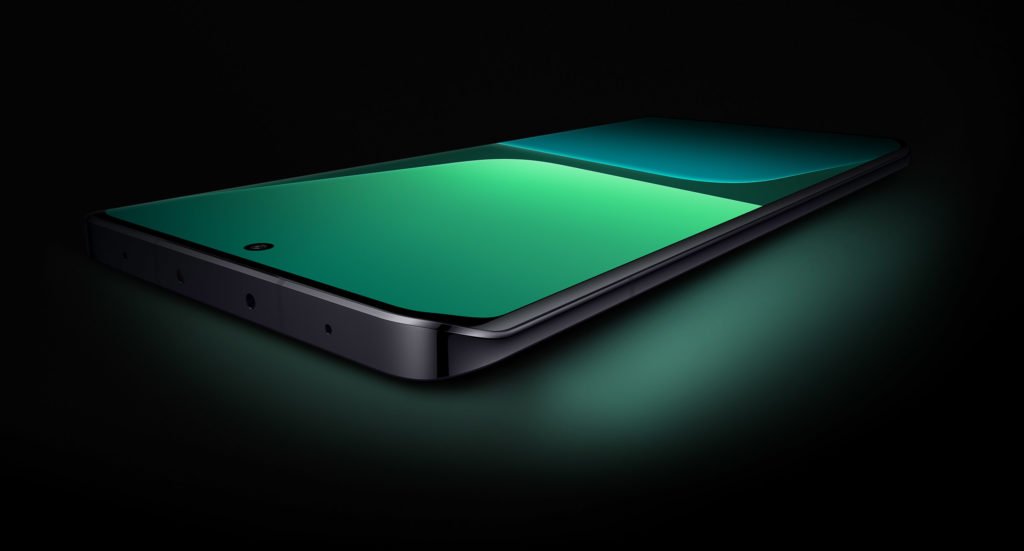In today’s world, the cell phone has become an essential tool and an integral part of our daily lives. It’s almost impossible to imagine a day without one. With its ever-evolving technology, cell phones have transformed how we communicate, work, and consume media. As we continue to move forward in the digital age, we can’t help but wonder what the future holds for cell phone technology. In this blog post, we’ll explore some of the predictions and possibilities for the cell phone industry in the coming years and how they will impact our lives.
Modular Phone
According to Wikipedia, “A modular smartphone is a smartphone designed for users to upgrade or replace components and modules without the need for resoldering or repair services.” According to WEEE Forum, 5.3 billion phones have been wasted(dropped out of use) in 2022.
However, there is a growing sentiment among consumers that constantly upgrading phones is becoming pointless. Modular phones are gaining in popularity as they offer users the ability to upgrade only the components they need without the need to purchase a completely new phone. This trend is expected to continue in the future, giving users the ability to customize their mobile devices to their specific needs.
Under-display Camera
Under-display” is a new technology in which the camera is embedded beneath the phone screen. Several manufacturers have already launched smartphones with under-display cameras, such as the Samsung Galaxy Z Fold 3 and the ZTE Axon 40 Ultra. The iPhone 16 is also expected to launch with this technology.
With this innovation, manufacturers are no longer limited in space when it comes to the front camera. This means that the design of mobile devices can be transformed, offering users a bigger screen and a sleeker appearance. Combined with the other advancements in modular phones and flexible devices, it’s going to revolutionize the way we use our phones. The future of smartphones is all about innovation that enhances our daily lives, and under-display cameras are just the beginning.
Flexible, Bendable, and Foldable Phone
Due to advancements in display technology, an increasing number of smartphones are being released with flexible, bendable, and foldable designs, and this trend is expected to continue in the coming years. These developments have the potential to offer users a range of benefits, including devices that can fold, bend, and flex to make them more portable and versatile for a wider range of applications.
Holographic projection
Holographic projection is just one of the many exciting possibilities for mobile phones in the future. It has been around since the 1940s, but holographic projection has only recently gained widespread popularity. It is a technique that uses light to produce a three-dimensional image (3D) or hologram that appears to float in space. The image is created by projecting light onto a surface or through a medium, creating an illusion of depth and dimensionality.
Holographic projections are proving to be one of the most exciting applications of smartphones. Imagine being able to view a hologram of your favourite film or television program on your smartphone. As an example, you might be able to attend a virtual meeting in 3D and see your colleagues as though they were in the same room as you. Since mobile phones are already capable of creating and transmitting holographic images, it’s not too far-fetched to anticipate a future where we’ll be surrounded by holographic technology that’s deeply integrated into our daily lives.
Over-the-air Charging
Charging is always a concern for every phone user and phone manufacturers and scientists are trying to develop high-capacity batteries that could give all-day power to your phone. However, there are so many phone brands that have introduced wireless charging but imagine if your phone charged like connecting WIFI!
Over-the-air charging has been a dream for many years, and it seems that this advancement is finally making its way into our daily lives. An Israeli company called Wi-Charge has introduced a revolutionary technology that allows for over-the-air wireless charging. This cutting-edge technology utilizes electromagnetic radiation to transmit the charge to devices up to a distance of 30ft away.
The Wi-Charge system allows for smart devices to be charged by converting electricity to infrared radiation, making charging devices effortless. This technology is set to follow a similar path, and soon, over-the-air chargers will be delivering power to devices with ease. Along with the other developments in the future of cell phones, over-the-air charging means that saying goodbye to wired chargers is becoming a reality.
Photonic Crystal Display
Photonic crystal displays (PCDs) are new displays that could revolutionize the way we view our mobile devices. PCDs feature nanostructures that adapt and modify the light output, resulting in a bright, clear display that is easy on the eyes. PCDs could be the perfect match for flexible, bendable, and foldable phones, which are also expected to be a major development shortly.
These displays could potentially be placed on curved surfaces and operate on less power, thus offering better battery life. Additionally, PCDs can be used in conjunction with under-display cameras, providing an unhindered display but with front-facing camera capabilities. The future looks bright for the cell phone industry, and photonic crystal displays are a prime example of how innovation is powering the next wave of advancements.
Nano-Tech Battery
As smartphone technology continues to progress, one of the major concerns among users remains the battery life. Fortunately, researchers are exploring new options to solve this issue, and the potential of nano-tech batteries cannot be ignored. These batteries have been shown to have significantly higher energy density and faster charging times compared to conventional lithium-ion batteries. This breakthrough technology, along with over-the-air charging, could soon alleviate the need for tangled cables and bulky charging ports.
Virtual Reality
As mobile technology continues to evolve, the integration of Virtual Reality (VR) has become a hot topic within the industry. As discussed in previous sections, phone manufacturers are exploring new ways to improve device functionality and user experience with modular phones, flexible displays, and under-display cameras. The addition of VR technology is expected to take mobile entertainment to the next level.
Imagine experiencing concerts and sports events from the comfort of your own home, or immersing yourself in an entirely different world through gaming and storytelling. While still in its early stages of development, VR has the potential to revolutionize mobile entertainment and the way we consume content on the go. As the smartphone market continues to advance, it will be interesting to see how manufacturers incorporate VR tech into their devices and how it will change the way we interact with our phones.
Augmented Reality
Imagine that you are playing with Pokémon or Dynasors or holding a meeting with your friend in your bedroom! It is believed that augmented reality or AR will play an important role in the future as a way to connect reality and virtual reality. The concept of augmented reality (AR) involves overlaying digital information over the physical world to enhance the perception of reality by the user. While phones are currently the key to AR, the technology is evolving rapidly and experts predict that AR glasses will replace smartphones as the next generation of mobile terminals.
AR and VR are different in that AR can connect your phone to virtual reality, whereas VR is totally virtual, requiring a headphone and VR glasses. However, both use similar underlying technologies.
AI Everywhere
Artificial Intelligence is not just the future of mobile technology, it’s already everywhere in our daily lives. From voice assistants on our smartphones to self-driving cars, AI is changing how we live, work, and play. In the mobile space, the growth of AI is driving a whole new class of mobile app possibilities, enhancing user engagement and business growth.
AI is also enhancing both the hardware and software within mobile phones, with implications for both marketers and consumers. As we look at the future of cell phone technology, it’s clear that AI will continue to be a driving force behind innovation and progress.
Frequently Asked Questions:
What is the Importance of Cellphones in Today’s World?
Cell phones have become an essential tool and an integral part of our daily lives. It is almost impossible to imagine a day without one. Cell phones have transformed how we communicate, work, and consume media. As we continue to move forward in the digital age, what are the predictions and possibilities for the cell phone industry in the coming years and how will they impact our lives?
What distinguishes AR from VR?
Augmented reality (AR) is a technology that blends digital elements with the real world. Users see virtual objects overlaid onto the physical environment through a device like a smartphone or a headset. Meanwhile, virtual reality (VR) replaces the physical world with a digital one. Users are entirely immersed in a simulated environment through a headset and often handheld controllers.
What is the possibility of AR replacing smartphones in the future?
There is no clear answer to this question as it is difficult to predict what the future of technology holds. However, some experts believe that augmented reality (AR) could eventually replace smartphones as the primary way people interact with technology. With advances in AR technology, it is possible that AR devices could eventually replace the need for a separate smartphone device. However, it is also possible that smartphones could continue to evolve and incorporate AR technology into their existing features.
What will replace cell phones in the future?
Many experts believe that wearable technology will become increasingly popular. This could include smartwatches or even implanted devices that can communicate with other devices and provide users with a constant stream of information. Augmented reality devices may also become more common, allowing users to view digital content overlaid on the physical world around them. It is also possible that voice-activated technology will transform the way we communicate, allowing us to interact with devices without the need for a physical interface. Additionally, Direct Neural Interfaces (also known as Brain-Computer Interfaces) or DNIs could enable us to control devices simply by being implanted inside the brain.
How has phone technology evolved over the years?
Phones started as primitive devices with basic functionalities like making calls and sending messages. With the advent of smartphones in the late 2000s, phones became high-end digital assistants with app stores, digital assistants, and advanced camera functionalities.
What is 5G connectivity?
5G is the fifth generation of wireless technology that promises faster internet speeds, lower latency, and greater network coverage compared to its predecessor, 4G.
What is a foldable phone?
Foldable phones are expected to be the next big form factor in the smartphone industry. They have screens that can be folded in half, allowing for greater screen real estate without sacrificing portability.
What are holographic displays?
Holographic displays are the next evolution in phone screens. They allow for 3D images to be displayed in front of the user without the need for glasses or other accessories.
How will artificial intelligence affect phones?
With the integration of AI, phones will become more intuitive and personalized to the user. They will be able to anticipate user needs and provide recommendations accordingly.
What is 6G?
6G is the next generation of wireless technology that is still in development. It is predicted to be even faster and more efficient than 5G.
Will flip phones ever make a comeback?
While it’s unlikely that flip phones will make a large comeback, some phone models like the Motorola Razr have reintroduced the clamshell design with modern features.
What will smartphones be like in 2030?
It’s difficult to predict exactly what future smartphones could look like in 2030, but many experts think the future will be filled with even more advanced AI technology, holographic displays, and greater connectivity.
Why do some phone models not have a headphone jack?
Some phone manufacturers have removed the headphone jack in favour of wireless connectivity or USB-C ports. This allows for slimmer phone designs and greater water resistance.
Conclusion
In conclusion, the cell phone industry has come a long way in just a few decades and the possibilities for what it could become are endless. It is predicted that this industry will undergo many changes within the next few years. Nevertheless, smartphones are still a few years away from becoming truly useful devices that can enhance every aspect of our lives.
Keep up with the latest advancements in cell phone technology by exploring the Paper Now blog. Experience the power of the latest technology and innovation first-hand to give you a glimpse into the future of cell phone technology







